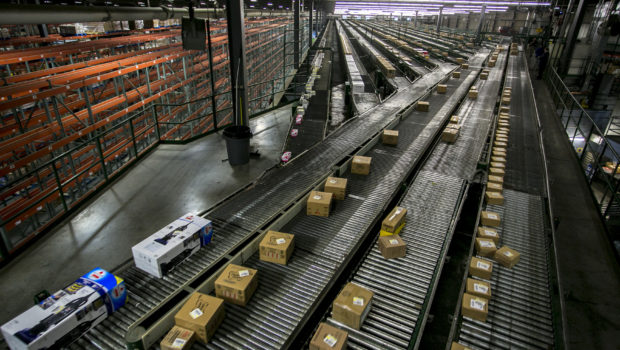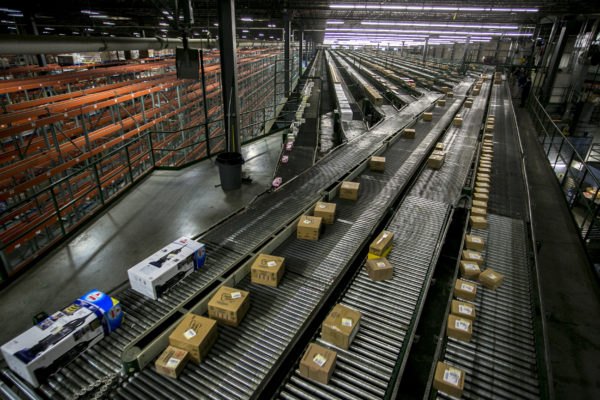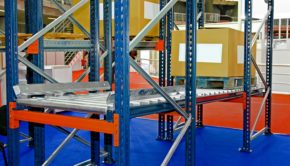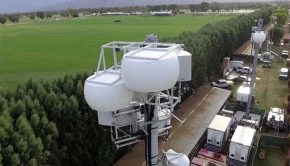How Conveyor Systems Have Changed the Functioning of Our Factories
The conveyor system can be referred to a common piece of equipment that is categorised under mechanical handling. It basically facilitates the movement of materials from one particular point to another. Nowadays a number of useful applications involving transportation of bulky and heavy materials is done with the help of conveyor systems. They allow quick transportation and look out for a variety of materials. We now also find the use of such systems in airports and supermarkets. These systems provide a lot of benefits that have made them very popular. In almost every industry there are many kinds of conveyor systems available that serve a different purpose for different industries.
Before Conveyor Systems
Before the current conveyor systems or even before the first conveyor belt was developed, the industries used human labour for transportation of material from one particular point to another. The labours manually fed raw materials and semi-finished goods in the factories. This involved the hiring of labour, which was capable enough of creating a human resource challenge by itself. Moreover, the human labour was very costly, and this resulted in decreased cost inefficiency in the long run. Unlike machines, humans needed breaks from work which also brought their own set of problems such as decreased production. Another challenge was the time taken to finish one particular product. Since there were no such systems, product completion took a lot of time. Thus, to overcome these challenges, conveyors were made a common thing in many industries like manufacturing, food, pharma etc.
In Current Times
Conveyor belts and systems have now taken over the factories all over the world. They now have facilitated Production and Manufacturing in almost every factory in the world. Since conveyor belts are more user-friendly, they do not create Human Resource challenges. Moreover, installation of a conveyor system is a one time cost to be incurred. Unlike humans, this proves to be a very cost-efficient methodology in the long run. Now with the help of conveyor systems manufacturing is easy and product completion takes relatively lesser time. This in turn enhances the profitability of the company that is using such systems.
Various Types of Conveyor Systems and their Applications That Have Helped Different Factories To Increase Their Production
As of now, there are many different types of conveyor systems that are placed to help manufacturing units increase their daily production. These varieties of types have helped in changing the functioning of our factories. So let’s have a look at some of the most popular types along with their specific applications!
- Slat/Apron Conveyor – This system includes a horizontal material handling belt that is generally made up of steel or wood. It is typically used for applications in which large and heavy moving objects are included. These systems have a heavy-duty use with incurring lesser wear and tear.
- Belt Conveyor – This conveyor uses continuous belts to transport products for material. They can be customised according to the capacity or work. They are very popular within the food services, scrap management and postal industries and manufacturing units. More advanced belt conveyors useConveyor pulley lagging to improve traction and hence can carry more load safely.
- Magnetic Conveyor – Specifically used in the industries where ferrous materials are dealt with, this magnetic conveyor uses moving magnets underneath tables or plates that are stationary. Such systems can be both horizontal or vertical.
- Bucket Conveyor – The bucket conveyor is generally vertical and uses specific compartments laid in a row that gets filled with the product that is to be conveyed. It is then transported from one point to another. Applications include food handling or liquid materials such as sludge.
- Overhead Conveyor – As the name suggests overhead conveyors are attached to the roof of the manufacturing plant. They lift up a particular part or material from one place and transport it to another by suspending it in the air. This system is extremely popular when it comes to automobile manufacturing and powder coating firms (website).
- Pneumatic/Vacuum Conveyor – This conveyor uses a vacuum or air pressure to transport materials through closed tubes and ducts along the surfaces. Their applications involve sand collection or ticket delivery along with uses in chemical and mineral producing forms.
- Roller Conveyor – These types of conveyors are also very popular when it comes to their usage. They include a roller diameter and an axle and simply allow the product to slide on as they are captain it these rulers can be manual or powered.
- Vertical Conveyor – These conveyors are just like forklifts; however, they are much bigger. They are used to transport materials vertically, and their applications include moving dry bulky materials such as gravel or coal.
- Vibrating Conveyor – This conveyor uses linear vibration, and they move the material as they are carrying it over them while moving. A particular use has been seen in the food production industry where the food product is needed to be vibrated so that it does not stick with each other while moving.
Benefits of Conveyor Systems
Now as we have had a look at the types and various applications of the conveyor systems, let us have a look at the benefits they provide. It is only because of these benefits that they have become increasingly popular and have entirely changed the way our factories use to function.
- Conveyors can safely transport materials from one particular level to another, which when done by human labour would be exhausting and expensive.
- They can be installed almost everywhere, and are much reliable than using a forklift or other machines that are used to transfer materials.
- They can move loads of all weight, shapes and sizes. Also, many have improved safety features that help in preventing accidents.
- There are a variety of options available for running conveying systems and are equipped to fit individual needs.
- Conveyors designed with slope allow materials, both big and small, to be easily moved from one elevation to another easily. This saves a lot of time.
There we go! I hope this information has been helpful enough. You are most welcome to add more inputs in the comments section.

















